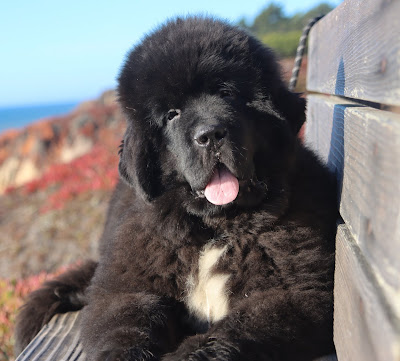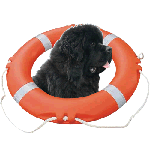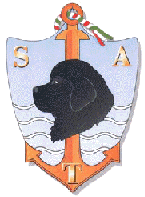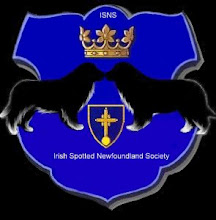Sunday, August 29, 2021
The Newfound Tragedy Of The Charlotte Christine
Charlotte Christine: Shipwrecked On Ulleung Island In 1873
(By Robert Neff)
"On Aug. 27, 1873, the Charlotte Christine, a German barque, departed Vladivostok bound for Chefoo (modern Yantai), China. We don't know much about the ship save that it was relatively small (286 tons) and apparently arrived in the Far East the previous year or so, mainly transporting goods, including cotton, along the Chinese coast.
The ship was commanded by Captain Fisher and had a crew of 11 men. It isn't clear why it was suddenly consigned to travel to Vladivostok or what it was transporting, but we do know there were 11 Chinese passengers in addition to the captain's wife, child and a large Newfoundland dog.
When the Charlotte Christine departed Vladivostok, the weather was good and Fisher ― who apparently had no experience sailing in the East Sea ― probably thought the voyage would be an easy one. However, on the second day of the voyage, the wind began blowing from the northeast and the ship encountered "thick heavy weather." Fisher was not the only one to be caught unawares by the storm ― several ships were caught up in it and at least two were reported to have been wrecked near Japan.
It was about 1 a.m. on Aug. 30, when a crewmember noticed what he thought was a sail in the distance off the starboard bow. The illusion was dismissed when, despite the howl of the wind, the ominous sound of breakers could be heard. The sail was actually "pinnacle rock" and despite Fisher's desperate attempt to steer the ship away from danger, it was too late; the ship struck aft upon a rock.
The anchors were dropped immediately and one of the ship's boats, with a line tied to it, was lowered into the sea but the waves were too powerful and it was promptly swamped. The boat and the two sailors in it were washed away. But there was no time to mourn the loss of the sailors.
The sea pounded upon the ship and wave after wave broke over her deck ― thumping the hull heavily upon the rocks. The captain ordered the fore and main masts to be cut away so as to lessen the strain upon the ship. It was about this time that they heard yelling coming from the shore ― the two crewmembers who had been swept away had somehow managed to make it to safety.
Several attempts were made to get a rope ashore so that the men could tie it to something and the rest of the crew and passengers could be ferried off the ship to the island. The first attempt was made with a lifebuoy, then the dog (it drowned in the attempt), followed by a couple of men who tried to swim to shore with the ropes tied around their chests but the heavy surf foiled them and they had to be hauled back in. Finally, after five hours of hard labor, "an empty water cask floated to the rocks" and two men were able to tie the rope to a nearby tree (the other end was tied to one of the remaining masts) allowing the crew and passengers to be brought ashore safely. By late morning the sea finally succeeded in smashing the ship to pieces.
The East Sea is a deep and vast stretch of water with very few islands and, other than the small Russian communities around Vladivostok and the western coast of Japan, there were no ports available ― the Korean Peninsula was still closed to foreigners. For the 25 castaways, despite being on a large island, things must have seemed nearly hopeless.
The Charlotte Christine had wrecked upon Ulleung Island (at that time known to the Europeans as Dagelet) and was relatively unexplored by Westerners. One early visitor noted the island was extremely rocky with a towering peak almost 1,000 meters tall and described it as being 'clothed with forest from the verge of perpendicular cliffs of 500 feet [152 meters].'
The shipwrecked survivors began exploring and discovered several empty Korean boats but found no trace of their occupants. They were probably unaware that for centuries the island had remained relatively uninhabited ― the only exception being Korean fishermen who would sometimes visit and also the annual visit by boat builders who harvested trees and built boats, but their sojourns were short.
When a British warship had visited in the late 1850s, it found only a 'few half-starved Korean fisherman' barely eking out an existence and denounced the island as a "weird and lonely spot." The island remained, for the most part, uninhabited until 1879 when a group of Koreans from Gangwon Province established a small permanent settlement.
As for the castaways from the Charlotte Christine, they gathered what they could from the ship's debris that washed ashore ― including the small boat despite being waterlogged and damaged. The island provided very little in the way of provisions. Fisher estimated they could survive for a month, 'with the provisions saved from the wreck, and the roots and shellfish which could be gathered.' It was obvious they could not depend on being found before their food supply was exhausted so they began to repair the small boat. The group agreed that if a rescue ship did not arrived by Sept. 12, they would send five men in the small boat to seek help from the Japanese ports of Shimonseki or Nagasaki. No one relished the idea of trying to make the journey in such a small boat.
Fortunately, on Sept. 10, a ship was spotted in the distance ― it was the Russian corvette Vitiaz bound for Nagasaki from Vladivostok. The small boat was immediately launched and managed to sail close enough to the Russian corvette to be noticed. Captain Nazimoff, the commander of the warship, had the castaways brought on board his ship and then transported them to Nagasaki ― arriving there on Sept. 13. What became of Fisher and his crew is unknown ― as in many of these early Korean encounters, the participants simply faded from the pages of the past."
Thursday, August 19, 2021
If A Prayer Today Is Spoken
"If a prayer today is spoken,
Please offer it for me,
When the bridge to Heaven is broken,
And you're lost on the wild, wild sea,
Lost on the wild, wild sea."
Tuesday, August 17, 2021
Monday, August 16, 2021
Italian Dogs Trained As Lifeguards Save 20 Lives Every Year
(Good News Network - August 2021)
"Stories about sled dogs hauling medicine and supplies through the frozen wilderness have become the stuff of legends, but did you know pups are proving just as powerful in the waves as they are on the ice?
In Italy, an elite squadron of 350 specially-trained canines from the Italian School of Water Rescue Dogs (Scuola Italiana Cani Salvataggio, or SICS) has successfully been patrolling the beaches, working as lifeguards.
300 SICS units, consisting of one dog and one trainer, are tasked with watching over approximately 30 of the country’s busiest beaches.
Thanks to their willingness to perform, strength, and fearless exploits—including leaping from helicopters into the surf below to rescue at-risk swimmers—an average of 20-30 lives are saved annually by the doggie guards, and that number continues to climb each year.
Earlier this month, when several families, including eight children, were imperiled by strong wind and wave conditions while 330 feet from shore, three canine lifeguards and their trainers rushed in to save the day.
With the help of their human companions, dogs Eros, Mya, and Mira pulled everyone to safety in about 15 minutes
The SICS program is the brainchild of 59-year-old Ferruccio Pilenga, who got the idea that dogs would make excellent lifeguards back in 1989 from watching his own Newfoundland, an immensely powerful swimmer named Mas.
'He pulled a water-filled dinghy with three people on board for half an hour,' Pilenga told The Times of London. 'A human cannot do that.'
The SICS program is an arduous one. After 18 months of basic training, only those dogs successfully completing the required steps are deemed ready to move on to the more intensive aspects of lifesaving techniques, such as jumping from helicopters and leaping from speeding boats.
SICS teams are recognized for being especially effective in the face of large-scale life or death scenarios. Thanks to their special training, they’re better able to carry out the simultaneous rescue of multiple swimmers in situations where the capabilities of one or two lifeguards might be easily overwhelmed.
'To be able to use a dog in a water rescue mission gives the rescuer a leg up. The rescuer who operates on his own is alone. We are never alone. We are always in a team with our dog so it’s a six-legged unit. I can conserve my energy and become a more effective rescuer,' Plienga told Great Big Story.
'To make [people] understand,' I always say, ‘To pull a sled, it takes at least six dogs, to pull six people, you only need one dog.’
While the success of the program can be partially attributed to the dogs’ acutely attuned survival instincts that help them find the safest route to shore, as well as their stamina and ability to follow commands, Pilenga believes the emotional component they bring to their work cannot be underestimated.
'The presence of the dogs helps to lighten up the situation. The biggest reward is the emotion that the dog and the owner feel at the moment of the rescue, which further unites that special bond between dog and human.'
Italy is currently the only country to recognize certified canine lifeguards, but training centers are being set up for dogs in the U.S., Germany, Switzerland, and the Azores, with SICS eager to spread its safety net to encompass wider waters across the world.
Thursday, August 12, 2021
Friday, August 6, 2021
The Breeder's Breeder - The Judge's Judge
(By Manlio Massa)
"As many know, this year I was invited for two days of technical judgment, at the Gold Cup in Denmark, valid for the Danish championship.
I know the system very well, having participated in it countless times and having won four of its editions.
I appreciate it for his great potential for spectacular but I must also point out the technical limits of the formula.
Two of my 4 victories, in fact, were obtained without my Newfoundland having been the best of the breed in the two previous technical judgments.
The final, of great media impact for the promotion of the breed and immensely prestigious for those who win it, takes place with an exhibition approach of all breeds and, at times, without that fundamental cynological technical deepening in breed specialties.
Let me better explain: my criterion of judgment varies slightly depending on the context.
In an exhibition of all breeds, while scrupulously observing the dictates of the standard, my technical assessment fades after the attribution of the best male and the best female.
Then, to send the best of breed to the ring of honor (that is another type of competition), I pay particular attention to the condition of the coat and the predisposition of the specimen himself to the show.
For example: a movement fast enough that can compete with the rhythm of the other breeds that it will have to face, rather than training in the presentation of a dog and handler, grooming, all conditions that are certainly not part of the type.
Therefore, at the moment of the final judgment of the two winners of similar value, I will favor the one who in the group will create the greatest "love at first sight" on the spectator and will represent the external and visionary beauty that the public has of the breed.
In a National breed specialty, the more important the gathering is, the more I start from the assumption that the winning animal will be, for the coming year, an indication of type for breeders and breed lovers.
In this case I do care less, but always within a certain limit, the condition of a specimen's coat, the level of his grooming and the handling skills of his handler.
I would add that I no longer require a fast a movement but I almost demand the one typical of our breed, let's call it “phlegmatic/andante”.
I become very strict on the expression, on the construction, on the efficiency of the movement, in a word I greatly favor "functional beauty", because in my opinion breed meetings are the "king" test for the selection of breeding stock.
In my opinion, the "type" in our breed consists of a multiplicity of details that make it unique.
Let's take the head which is the first thing we generally notice in a purebred dog; our FCI standard (to the drafting of which years ago I had the honor of being able to give my external contribution) requires it to be powerful, it describes summarily its proportions, but above all praises the expression with a term "soft and benevolent".
The benevolent expression is obtained from a complicated series of components.
By excluding only one of these components, the expression is compromised.
The position of the eyes is crucial:
approaching the eyes to each other they will tend to round up, the ear insertion will rise higher on the skull and the expression will appear more severe (boxer) also due to the more sudden fall of the stop, these conditions usually mate with a too short muzzle: all this occurs when the skull / facial axis tend to convergence.
On the other hand, by moving the eyes away from the ideal position, the shape will definitively become almond-shaped, the fall of the stop will be attenuated, the insertion of the ear will lower, the length of the muzzle will increase and the expression will become sad, like a hunting dog: all this occurs with divergent skull/facial axis.
It is true that we are talking about fractions of centimeters, but the expression and type of a breed is played out on those fractions.
The ideal conditions of expression are obtained only when the axis are perfectly parallel, in fact this condition is normally associated with eyes and ears inserted correctly and of the correct shape and size, muzzle of the right length, etc.
“The upper longitudinal axis of the skull is given by the imaginary line traced from the center of the occipital scale (craniometric point "inion") to the craniometric point "nasion", that is, at the meeting point of the upper nasal and maxillary apophyses with the frontal bones;
the upper longitudinal axis of the muzzle is the imaginary line that starting from the anterior superior margin of the truffle, reaches the line of the eyes. Prof. Giuseppe Solaro”
I could write for hours and detail my opinion on every single morphological characteristic of our breed, obviously I won't now.
Today, however, I would like to focus on the value of the length of the rump and the solidity of the topline (both absolute qualities of all breeds).
The croup and trunk are the transmission shaft between the power developed by the hind limbs that reaches the forelimbs.
A short croup and a not very firm or long topline wastes the effort of the hindquarters.
In most cases a croup of insufficient length is associated with a low tail hairline, which in addition to creating a functional problem is also an unaesthetic thing to see.
I would like to briefly address the theme color.
My judgment criterion, in mixed classes and in compliance with the standard, totally excludes an evaluation of color and markings, as I consider that the white/black variety cannot have an additional handicap towards a solid color subject.
In my doctrine of judgment, the evaluation of the color of the coat occurs only between subjects of the same variety of color, to be clear: a badly spotted white / black dog but of great typical value can be beaten only by another white/black subject of the same technical value but well piebald.
In this show in Denmark I gave the best of breed to a black / white dog and the BoS to a bitch of the same color variety.
In all my over than 30 years as a judge this has never happened to me, especially in such an important exhibition.
Having also bred white & black dogs all my life, I wondered if I wanted in some way to reward the fatigue, sacrifices and inevitable disappointments that have always accompanied this fragile but historical variety.
If I had done so I would have implicitly declared that being white and black was not only not a handicap but a plus.
I don't think I have.
They were simply the two best dogs, in my opinion, and I was very unsure (still am now) as to which one to assign the BoB to.
Both male – "Ch. OUKAYA Forever Le Grand Ami for Akvian Song" and bitch – "Ch. NEWETTA’s Unique Design in B&W" (one name, one destiny) were absolutely gorgeous but, today, I want to dwell on the female for a moment:
She dazzled me, because when she entered the ring I really felt my heart beat faster.
The head and its expression, the construction, her bones, the substance, in my opinion meant the plastic representation of the standard - let's add a perfect markings and a very pure white coat.
Today, even her correct but lazy movement, which I have perhaps excessively penalized (without detracting from the great value of the male), seems to be linked to her royal indifference to what happens outside the perimeter of her mistress, for whom she only had eyes. .
Despite my efforts to attract her attention, I was unable to get her to give me a look, but that is what often happens with some superior beings."
"Grant" pictures by Soren Fryberg and Sophie De La Croix
"Unique" pictures by Michele Ramsing
Subscribe to:
Posts (Atom)

































































